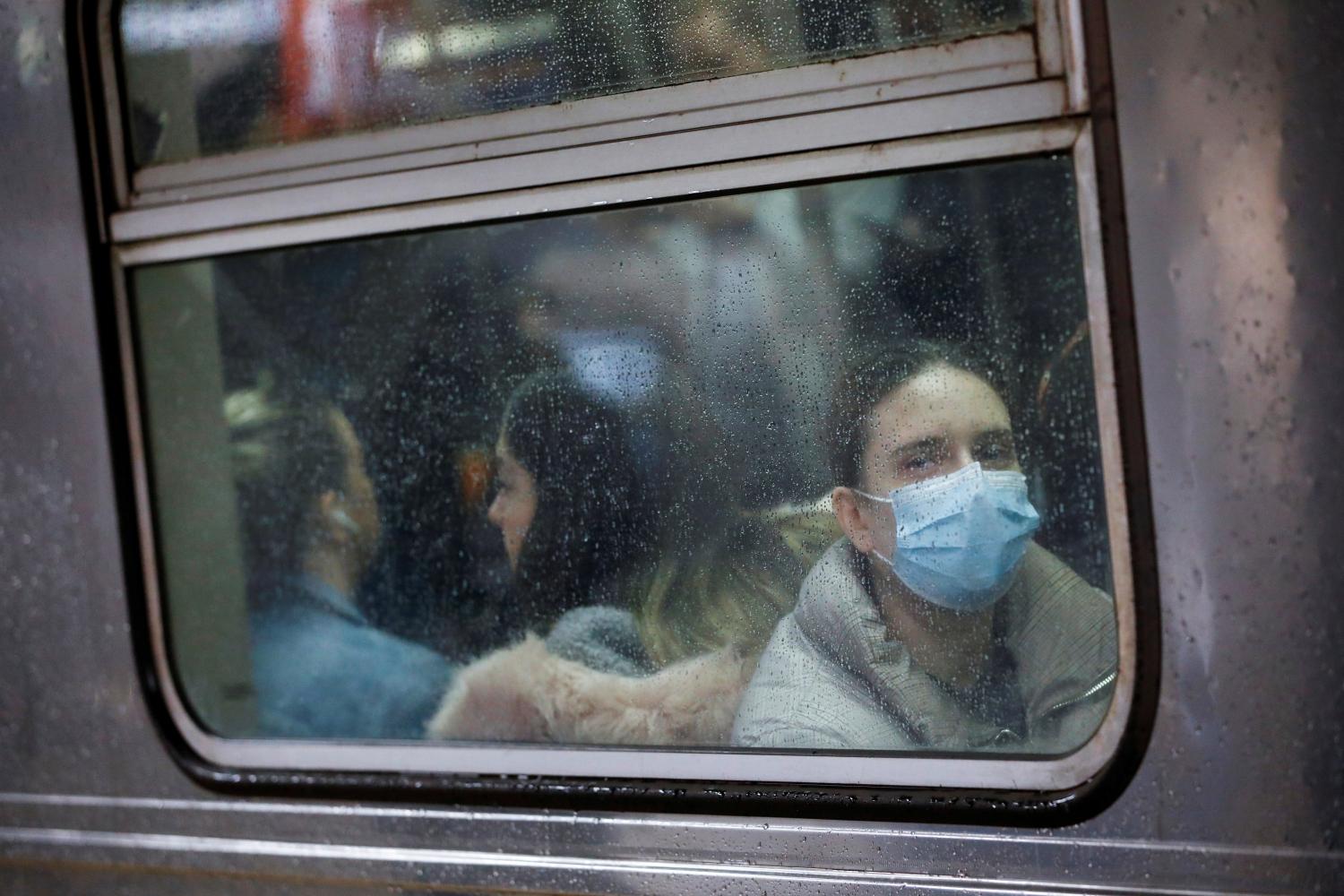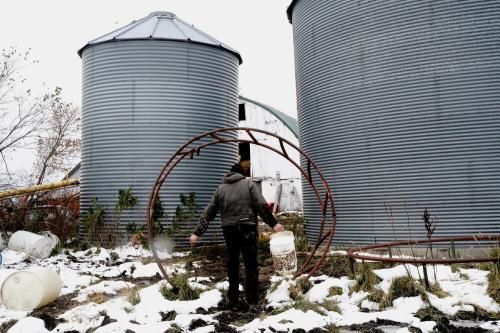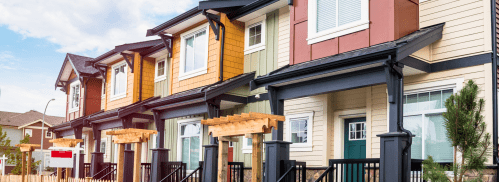This essay is part of the Actionable Ideas for Economic Recovery in American Cities, a feature of the COVID-19 Metro Recovery Watch.
Overview
The COVID-19 pandemic has highlighted the social and economic costs that housing insecurity imposes on communities. People living in poor-quality, overcrowded, or unstable housing—or without any home at all—cannot follow public health directives to safely “shelter in place,” and are at higher risk of contracting contagious diseases.1
The immediate recovery period after the COVID-19 crisis could offer a unique opportunity to improve housing security by increasing the inventory of long-term affordable rental housing. If housing asset prices drop, affordable housing providers could purchase existing low-cost housing units and add them to the stock of long-term affordable rental housing. Acquisition offers a shorter timeline and lower per-unit cost than new construction of affordable housing, as well as the potential to improve access to high-opportunity neighborhoods. Past housing subsidy programs from across the U.S. offer lessons on how to design and implement successful housing acquisition programs.
Challenge
Even before the COVID-19 pandemic, millions of Americans lacked access to stable, affordable housing.2 The current crisis has highlighted the social and economic costs of this crucial gap in the safety net. Even many Americans who have a home still face risks of instability—housing costs are a major financial stressor for low-income households, who typically devote between a third and a half of their incomes to housing.3 During economic downturns, cost-burdened households are especially at risk of losing their homes to eviction or foreclosure.4
Stable, decent-quality, affordable housing is also critical for communities and the overall economy. As the Great Recession showed, concentrations of foreclosed and vacant homes create negative spillovers across entire neighborhoods.5 The housing sector creates multiplier effects throughout the economy; contractions in housing construction, upgrades, and sales could translate into reduced employment and consumer spending, deepening the recession.6 Financial pressure that causes low-income renters to fall behind on payments could also harm small landlords, who are disproportionately Black and Latino or Hispanic, and own a large share of unsubsidized affordable housing.7
Once the immediate public health crisis is contained, policymakers should make more serious efforts to reduce the number of households who lack affordable, stable, decent-quality housing. The recovery period after the COVID-19 crisis may offer a rare opportunity to increase the amount of long-term affordable rental housing, especially in high-opportunity communities where obstacles to new construction are greatest. If real estate values decline or property owners in financial distress seek to sell, affordable housing providers could purchase existing low-cost housing units and add them to the stock of long-term affordable housing.
Response
Housing affordability and instability were serious problems for low-income, Black, and Latino or Hispanic renters even before the pandemic. That’s especially true in high-cost coastal markets and high-opportunity neighborhoods across the U.S., where local land use regulations have made it difficult and expensive to build moderately priced multifamily housing. Acquiring existing apartment buildings offers potential cost savings relative to new construction, and can create below-market units in low-poverty neighborhoods that often oppose new development of affordable housing.
A program to acquire existing multifamily buildings would require an initial subsidy allocation from the federal government, philanthropy, or both, in addition to low-cost loans. State and local governments are anticipating substantial revenue losses due to the economic crisis, so they will likely have limited ability to dedicate additional resources toward affordable housing. Targeting higher-opportunity neighborhoods—communities with well-paying jobs, access to public transit, and good schools—may be of particular value. Black and Latino or Hispanic renters have higher average housing cost burdens than white households, and job losses have hit them particularly hard during the pandemic.8Therefore, long-term investments in affordable rental housing could be particularly beneficial in reducing racial disparities in housing insecurity.
Recent local and national policies offer lessons for the design of future programs. One key lesson from these policies is that successfully pursuing acquisition takes particular skills: staff capacity as well as resources. An acquisition strategy is likely to be most appropriate (and most successful) in supply-constrained housing markets where affordable housing providers have some prior experience with acquisition and property management.
The King County Housing Authority and HUD’s Moving to Work program
The King County Housing Authority (KCHA) in Washington state has taken advantage of the flexibility granted by the U.S. Department of Housing and Urban Development’s (HUD) Moving to Work (MTW) program to pursue multifamily acquisitions as a means of increasing units in high-opportunity neighborhoods.9 MTW exempts participating public housing authorities from many existing public housing and Housing Choice Voucher rules, and provides them with flexibility in how they use their federal funds. KCHA has used this flexibility to establish ZIP-code-level payment standards for housing vouchers and provide counseling and housing search assistance, thus enabling voucher holders to move into a wider range of low-poverty neighborhoods.
King County has acquired mixed-income properties in high-opportunity areas through bond financing and other private financing tools.10 Under Washington’s state authorizing legislation, KCHA can issue bonds directly, not dependent on the county government. Additionally, in 2016, King County agreed to provide KCHA with access to the county’s triple-A credit rating. This type of credit enhancement can be valuable to housing authorities that (unlike KCHA) do not have strong, independent issuer ratings. Since 2016, KCHA has acquired more than 2,000 units of housing, prioritizing locations along the region’s emerging mass transit corridors.11
Both the ability to issue bonds and the shorter-term line of credit have allowed KCHA to act quickly when the opportunity arises to acquire a strategically located property. Through securing additional existing units, KCHA can preserve long-term affordability and provide housing in high-opportunity neighborhoods, characterized by high-performing schools, public transit, and good jobs.
New York City’s 10-year plan
During the 1970s, New York City suffered substantial population losses. The city came to own more than 100,000 vacant and occupied apartments and large tracts of vacant land through tax foreclosure. In 1985, Mayor Ed Koch announced an ambitious 10-year program to commit $5.1 billion of city capital dollars to using these properties to create or preserve 252,000 housing units for low-, moderate-, and middle-income households.12 By 2000, the plan had created 66,000 new housing units through construction or gut rehabilitation of vacant properties, and the renovation of another 116,000 occupied units.
The 10-year plan comprised a wide range of programs which provided subsidies to both nonprofit and for-profit organizations. The city generally transferred land or buildings to developers at little or no cost, and provided capital subsidies in the form of below-market interest rate loans. Research shows that this effort not only provided about 200,000 homes, but it also aided in revitalizing neighborhoods devastated by abandonment and arson.13
While the 10-year plan was not technically an acquisition program, the intervention did offer some valuable lessons. First, with control of land, the city was able to lock in affordability when markets later recovered. Second, the struggles the city faced in managing this large stock underscores the importance of quickly transferring ownership to capable and responsible nonprofit and for-profit owners. Third, while the scale of this program cannot be replicated, there was value in creating off-the-shelf programs that multiple developers could use. Fourth, the city aimed at revitalizing neighborhoods, and as such, clustered its property transfers on particular blocks, aiming to create housing that could serve a mix of low-, moderate-, and in some cases, middle-income households.
The New York City Acquisition Fund
Launched in 2006, the New York City Acquisition Fund aimed to provide flexible funds to mission-driven developers to acquire and preserve affordable buildings which might otherwise be sold to speculative investors.14 Several philanthropic organizations provided initial seed capital to start the fund, allowing it to provide capital for acquisition and predevelopment costs more quickly than other government programs. Foundation and city funds take first losses, while private lenders provide additional capital. Each dollar the city invested in the fund has leveraged $7 in additional private dollars.15
The fund is managed through a revolving credit facility. Three community development financial institutions (CDFIs) serve as originating lenders, and an asset management fund manages the Acquisition Fund.
Over its first 10 years, the fund provided $336 million in financing to create over 10,000 affordable homes, with 75% reserved for low-income residents. As successful as the program has been, one limiting factor is that the city has to negotiate and underwrite each deal separately. There could be substantial advantages to structuring subsidies as part of an as-of-right financing package with affordability restrictions that would not require project-by-project negotiations.
The Neighborhood Stabilization Program
Congress created the Neighborhood Stabilization Program (NSP) to mitigate the impact of concentrated foreclosures in low-income neighborhoods during the 2007 to 2009 housing crisis. HUD allocated nearly $7 billion over three rounds of funding to local and state governments and nonprofit organizations.16 Congress intended for the NSP to support hard-hit neighborhoods through geographically concentrated activity, and allowed grantees to spend funds on various activities intended to reclaim and reutilize vacant properties.
In practice, most grantees used NSP funds either to acquire and rehabilitate properties or to demolish vacant structures.17 Although the program initially targeted single-family homes (which accounted for most foreclosures), grantees in strong real estate markets—including New York City, Chicago, Boston, and Washington, D.C.—used their NSP funding to acquire and rehab multifamily rental properties, adding them to the long-term affordable inventory.
NSP grantees encountered some implementation difficulties that offer lessons for the design of future programs. Most importantly, many organizations had limited prior experience in acquiring and rehabilitating vacant homes.18 Grantees with existing expertise were able to deploy resources more quickly and effectively. Some local governments had to work around institutional barriers such as procurement rules that hindered their ability to make strategic acquisitions. 19
One tension within the NSP program was conflict among multiple goals. As part of the larger economic stimulus package, NSP grantees wanted program funding to support residential construction jobs through rehabilitation work. But properties that needed extensive rehab had substantially higher per-unit costs, which limited the amount of housing grantees could purchase. The COVID-19 crisis is likely to create similar dilemmas for local organizations—developing a clear strategy and establishing priorities early would help guide consistent actions later.
Funding
There is no set minimum cost for implementing a rental housing acquisition program; more funding would enable the purchase of more housing. The two New York City programs operated on quite different funding scales ($5.1 billion for the 10-year plan, $336 million for the Acquisition Fund). NSP grants to individual organizations ranged widely in size; Riverside, Calif., received less than $10 million under the second round of NSP funding, while Los Angeles received $100 million. Washington’s King County is a high-cost housing market, where acquisition costs average $300,000 per unit—substantially lower than new construction, but not a trivial amount.
The policies highlighted here represent funding from the federal government, local governments, and philanthropic capital. Because the COVID-19 pandemic has squeezed state and local budgets, it is likely that any new public subsidy would need to come from the federal government, especially if programs are to achieve any meaningful scale. Acquisition could also be accomplished by pairing new funding sources with increased emphasis on acquisition through existing programs, such as the Low-Income Housing Tax Credit (LIHTC), HUD’s HOME Investment Partnerships Program (HOME), or the national Housing Trust Fund.
Whether an acquisition program would require an ongoing subsidy for maintenance and operation depends on the program’s design and whether it could be paired with existing funding sources available for those uses. Existing buildings that are in relatively good physical condition would have lower operating costs, at least initially. While it is difficult to achieve affordability for very low-income renters without an ongoing operating subsidy, buildings serving a mix of low-, moderate-, and middle-income households have greater potential for covering operating costs through rents or other program income.
Potential impact
The COVID-19 crisis has drawn widespread attention to the existing inequalities in American society, including disparate racial health impacts and the financial fragility of low-wage workers.20 As policymakers and voters become more aware of the social costs that housing instability creates, there is an opportunity to address long-standing gaps in the safety net.
Acquisition offers two primary advantages over new construction, especially in high-cost housing markets. First, the per-unit cost of creating long-term affordable housing is much lower, even when properties require some rehab, which allows limited subsidy dollars to stretch farther. Second, in housing markets with highly restrictive local land use regulations and/or NIMBY politics, developing a new apartment building can take a decade or longer.21 Acquiring existing buildings in relatively good physical condition can make affordable units available to low-income households much faster and in a wider set of locations.
Finally, while local governments offer an excellent laboratory to test new policy ideas, only the federal government has enough financial resources to achieve large-scale impacts.
Sarah Crump provided outstanding research assistance. This piece draws on material originally published by Brookings on June 8, 2020.
-
Footnotes
- New York University (NYU) Furman Center, “COVID-19 Cases in New York City, a Neighborhood-Level Analysis.” The Stoop: NYU Furman Center Blog. April 10, 2020.
- Joint Center for Housing Studies of Harvard University, “America’s Rental Housing 2020.” January 2020, https://www.jchs.harvard.edu/sites/default/files/Harvard_JCHS_Americas_Rental_Housing_2020.pdf.
- Jeff Larimore and Jenny Schuetz, “Assessing the Severity of Rent Burden on Low-Income Families.” Board of Governors of the Federal Reserve System: FEDS Notes. December 22, 2017.; Catharine I. Paules CI, Hilary D. Marston and Anthony S. Fauci, “Coronavirus Infections — More Than Just the Common Cold.” The Journal of the American Medical Association, vol. 323:8 (2020).
- Stuart Gabriel and Gary Painter, “Why affordability matters.” Regional Science and Urban Economics, vol. 80 (2020).; Matthew Desmond, “Evicted: Poverty and profit in the American City.” (New York: Crown Publishers, 2016).
- Jenny Schuetz, Vicki Been and Ingrid Gould Ellen, “Neighborhood effects of concentrated mortgage foreclosures.” Journal of Housing Economics, vol. 17:4 (2008).
- Christopher J. Mayer and C. Tsuriel Somerville, “Residential Construction: Using the Urban Growth Model to Estimate Housing Supply.” Journal of Urban Economics, vol. 48:1 (2000).
- Whitney Airgood-Obrycki and Alexander Hermann, “COVID-19 Rent Shortfalls in Small Buildings.” Joint Center for Housing Studies of Harvard University. May 26, 2020, https://www.jchs.harvard.edu/blog/covid-19-rent-shortfalls-in-small-buildings/.
- Jenny Schuetz, “When middle-class incomes collapse, how you gonna pay next month’s rent.” Brookings Institution: Up Front. March 26, 2020, https://www.brookings.edu/blog/up-front/2020/03/26/when-middle-class-incomes-collapse-how-you-gonna-pay-next-months-rent/; Steven Brown, “How COVID-19 is affecting Black and Latino Families Well-Being.” Urban Institute. May 6, 2020, https://www.urban.org/urban-wire/how-covid-19-affecting-black-and-latino-families-employment-and-financial-well-being.
- King County Housing Authority, “Moving to Work: FY 2017 Annual Plan,” https://www.hud.gov/sites/documents/KINGCOUNTY17PLAN.PDF.
- Michael D. Webb, Kirsten Frescoln and William M. Rohe, “Innovation in Public Housing: The Moving to Work Demonstration.” Center for Urban Studies, University of North Carolina at Chapel Hill. January 2015.
- King County Housing Authority, “Moving to Work: FY 2020 Annual Plan,” https://www.hud.gov/sites/dfiles/PIH/documents/KingCoFY20Plan.pdf.
- Michael H. Schill, Ingrid Gould Ellen, Amy Ellen Schwartz and Ioan Voicu, “Revitalizing inner‐city neighborhoods: New York city’s Ten‐Year Plan,” Housing Policy Debate, vol. 13:3 (2002).
- Amy Ellen Schwartz, Ingrid Gould Ellen, Ioan Voicu and Michael H. Schill, “The external effects of place-based subsidized housing,” Regional Sciences and Urban Economics, vol. 36:6 (2006).
- See official New York City Acquisition Fund website at https://www.nycacquisitionfund.com/.
- New York University (NYU) Furman Center, “New York City Acquisition Fund (AF).” CoreData.nyc Directory of NYC Housing Programs, https://furmancenter.org/coredata/directory/entry/new-york-city-acquisition-fund.
- Paul A. Joice, “Neighborhood Stabilization Program.” US Department of Housing and Urban Development: Policy Briefs. March 2011.
- Jenny Schuetz, Jonathan Spader, Jennifer Lewis Buell and others, “Investing in Distressed Communities: Outcomes From the Neighborhood Stabilization Program.” Cityscape, vol. 17:2 (2015).
- Dan Immerguck,” Too Little, Too Late, and Too Timid: The Federal Response to the Foreclosure Crisis at the Five-Year Mark.” Housing Policy Debate, vol. 23:1 (2013).
- Laura Searfoss, “Local Perspectives on HUD’s Neighborhood Stabilization Program.” University of Illinois at Urbana-Champaign, Department of Urban and Regional Planning. 2011, http://hdl.handle.net/2142/68734.; Jonathan Spader, Alvaro Cortes, Kimberly Burnett and others, “The Evaluation of the Neighborhood Stabilization Program.” October 18, 2017, https://papers.ssrn.com/sol3/papers.cfm?abstract_id=3055189. James C. Fraser and Deirdre Oakley. 2016. The Neighborhood Stabilization Program: Stable for whom? Journal of Urban Affairs 37(1): 38-41.
- Linda Villarosa, “A ‘Terrible Price’: The Deadly Racial Disparities of COVID-19 in America.” New York Times. April 29, 2020, https://www.nytimes.com/2020/04/29/magazine/racial-disparities-covid-19.html.; Board of Governors of the Federal Reserve, “Federal Reserve Board issues Report on the Economic Well-Being of U.S. Households.” May 14, 2020, https://www.federalreserve.gov/newsevents/pressreleases/other20200514a.htm.
- Chang-Tai Hsieh and Enrico Moretti, “Housing Constraints and Spatial Misallocation.” National Bureau of Economic Research (NBER) Working Paper, no. 21154 (2015).; Sarah Mawhorter and Carolina Reid, “Local Housing Policies Across California.” Terner Center for Housing Innovation at UC- Berkeley. December 2018, http://californialanduse.org/index.html; Jenny Schuetz, “Restrictive Zoning is impeding DC’s goal to build more housing.” Brookings Institution: The Avenue. October 8, 2019, https://www.brookings.edu/blog/the-avenue/2019/10/08/restrictive-zoning-is-impeding-dcs-goal-to-build-more-housing/ ; Liam Dillon, Ben Poston and Julia Barajas, “Affordable housing can cost $1 million in California. Coronavirus could make it worse.” Los Angeles Times. April 9, 2020, https://www.latimes.com/homeless-housing/story/2020-04-09/california-low-income-housing-expensive-apartment-coronavirus.
The Brookings Institution is committed to quality, independence, and impact.
We are supported by a diverse array of funders. In line with our values and policies, each Brookings publication represents the sole views of its author(s).









